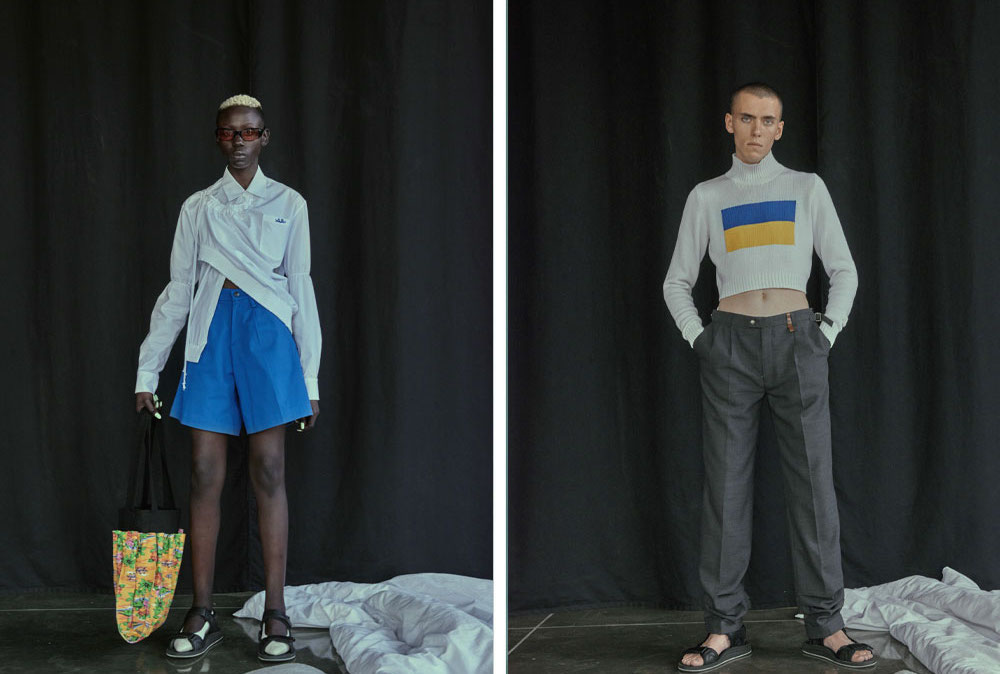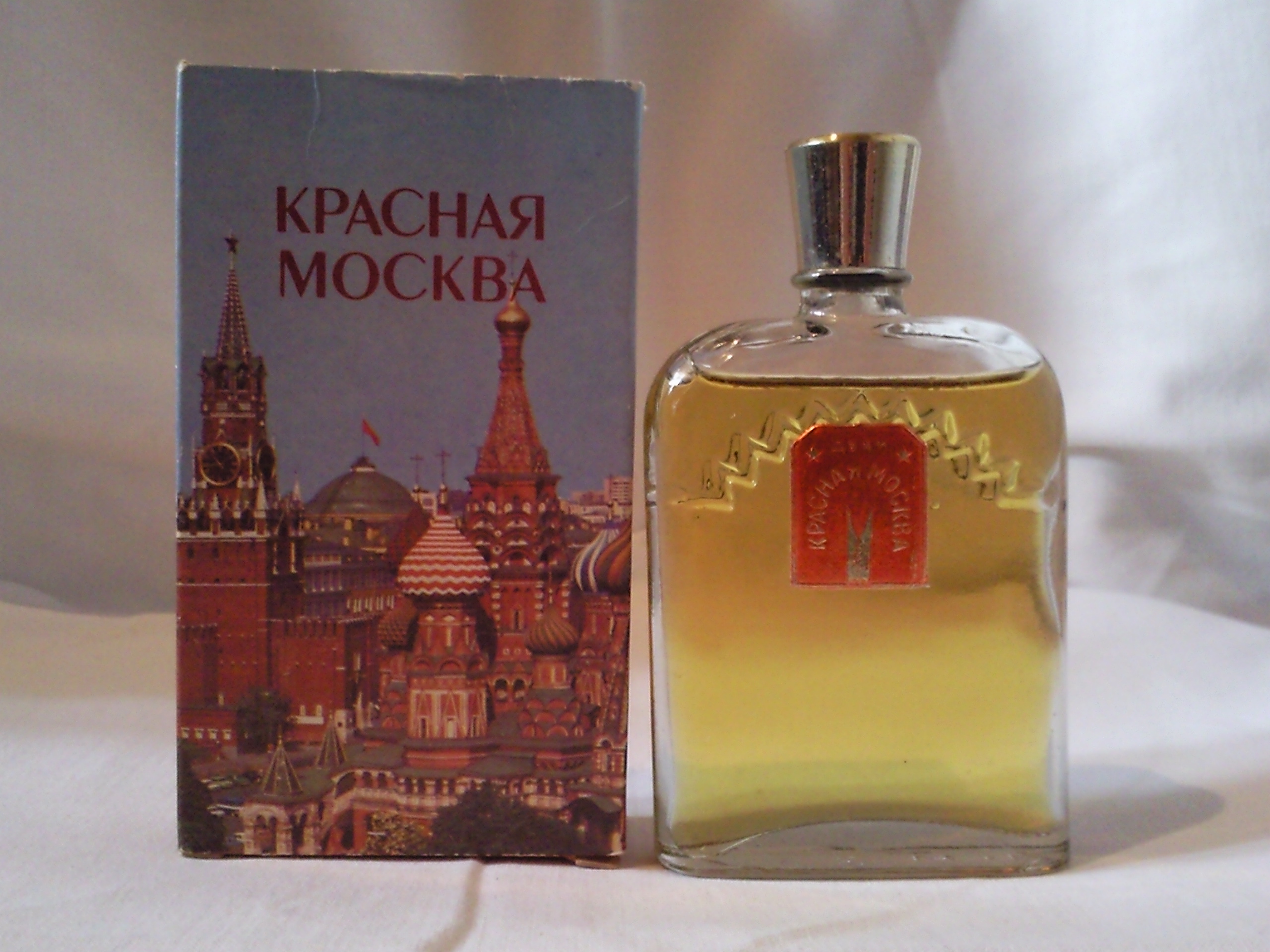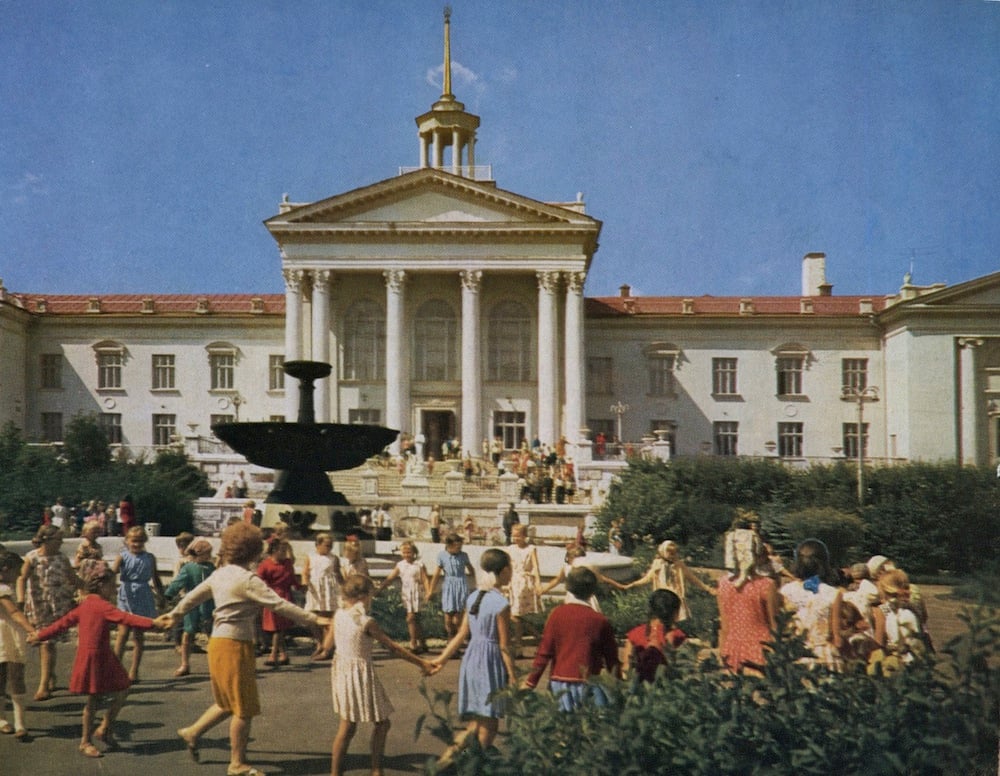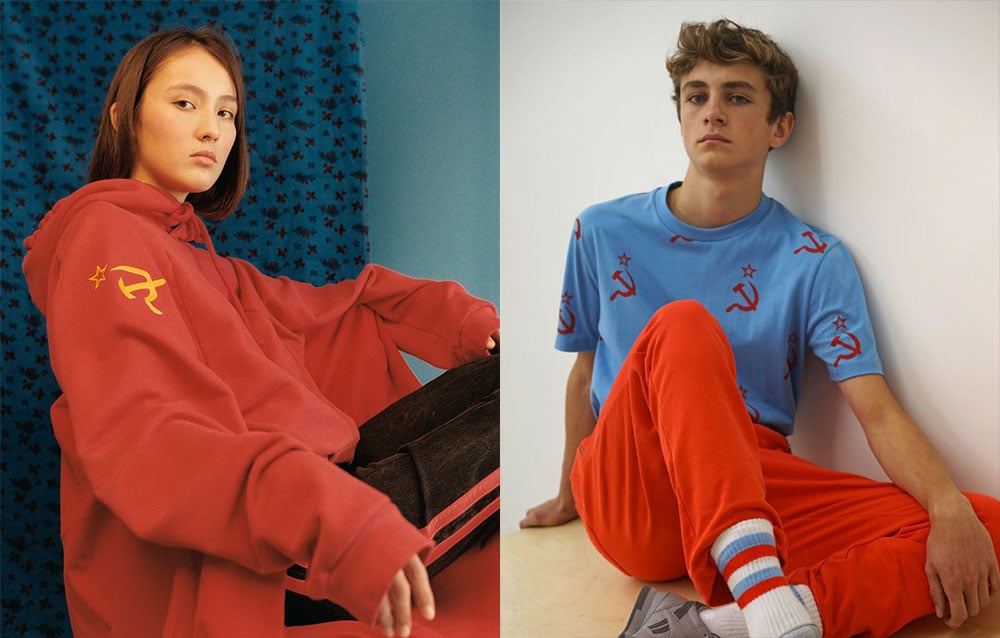Blast from the past: 10 fashion trends the Soviets did first
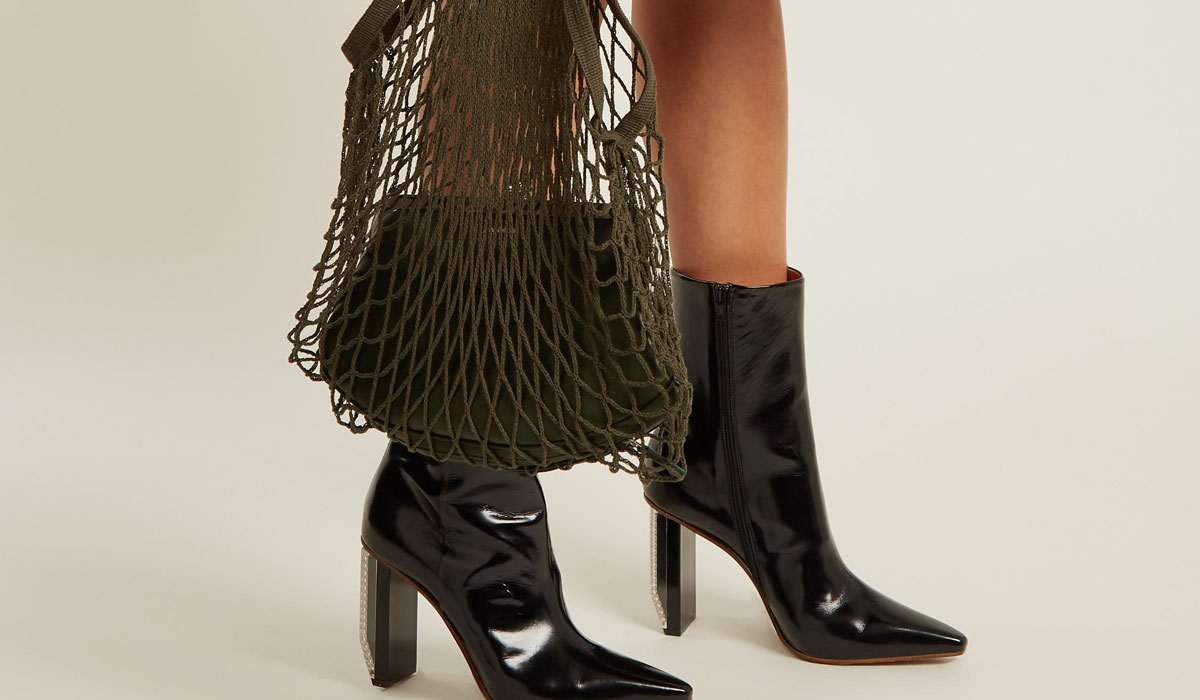
Remember the avoska string bag or square-toe shoes? These Soviet flashbacks are today’s hot trends
In the last couple of years, fashion has seen the stellar rise of the post-Soviet aesthetic. Largely thanks to the work of Gosha Rubchinskiy, the rough and edgy appeal of the turbulent Russian 90s now has a global following. But while sportswear and Russian underground rave culture have got their exposure, the broader history of Soviet fashion remains largely unknown. Or does it? Look closer, and you’ll see that a lot of looks from beyond the Iron Curtain have made their way onto the catwalk and street style worldwide.
In some ways, the combination of words “Soviet” and “fashion” still sounds a bit like an oxymoron. The Soviet ideology was all about productivity and practicality, and opposed any kind of consumerism. But in reality, it’s impossible to take away the desire to express yourself through clothes, even if the choice is extremely limited. Soviet fashion, with the exception of the party elite, often comes from a place of lack. This is one of the reasons why the Soviet attitude to style is incredibly relevant today: it’s all about sustainability, DIY and working with what you have. For decades, luxury fashion has embraced the austere charm of workwear, and now it’s come round to the poor but cool appeal of net bags and handcrafted knitwear — partly because it looks “edgy” and authentic, but also because of the move towards ethical consumption. In terms of how we dress and how we shop, we could definitely learn a trick or two from the Soviets.
The string bag
This season the practical string bag is more hip than a luxury handbag, at least according to Vogue US. Historically, the humble accessory was used by fishermen in France and Japan. There was at least one in every Soviet home — plastic bags were non-existent, so the much-loved avoska was indispensable for grocery shopping. Today the Vetements string purse goes for up to $3,465, although your local organic store probably has one in stock for a fiver. Moscow-based company “Avoska gives hope” has even turned the production of spring bags into a social initiative, providing jobs for people with disabilities.
Oversized tailoring
Oversized tailored suits have been all over the runways in the past few seasons: at Balenciaga, Vetements, Calvin Klein and Martine Rose. But during the Soviet period broad-shouldered jackets were all the rage. At times, they were ill-fitting due to the high demand and the lack of correct sizes on the market; sometimes, they were deliberately bought too big to grow into later. The large, imposing suit jacket is also connected to traditional ideas of masculinity. For his brand Situationist, Georgian designer Irakli Rusadze explored this side of his Georgian heritage. “Fathers and grandfathers would always wear suits, it’s in all the archival pictures. It was something very Georgian,” he told Dazed Digital.
Head-to-toe crochet
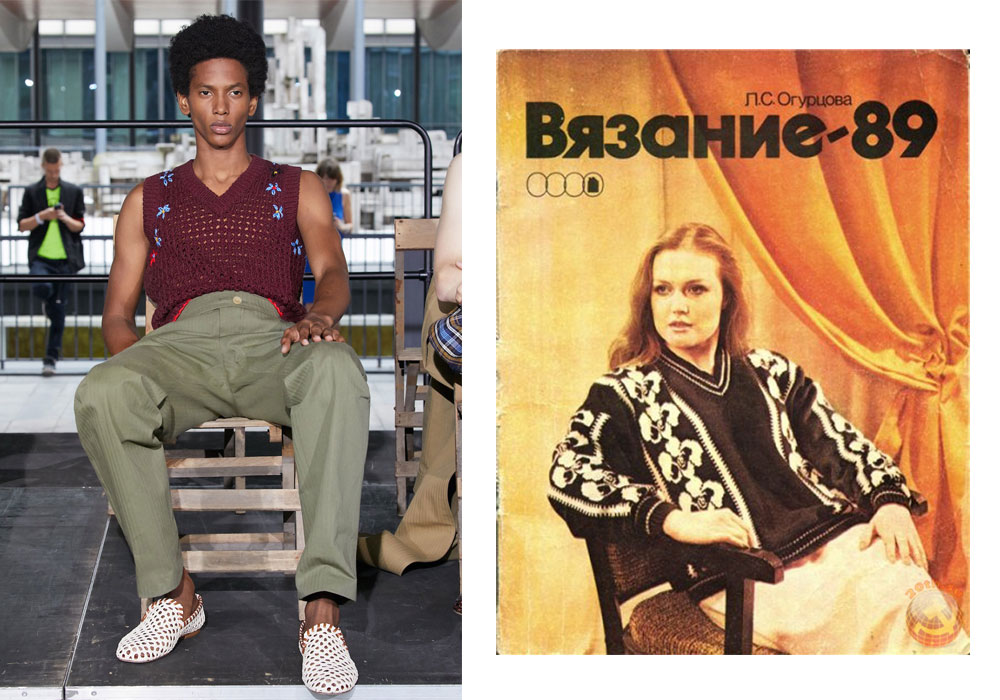
Crochet and knitwear has a rich history worldwide: it’s a traditional craft and a nearly-forgotten domestic feature. Today, in the collections of major brands like JW Anderson, LOEWE, Sonia Rykiel, Dolce & Gabbana, Saint Laurent and Acne Studios, thick knitted pieces are worn right over bare skin, and a crochet evening gown doesn’t look so out of place. For Soviet-era housewives, knitting was their prime DIY knowhow. The wool was more easily-available than fabric, so they’d knit not just hats and scarves for their kids, but also complete outfits for themselves.
Homely floral
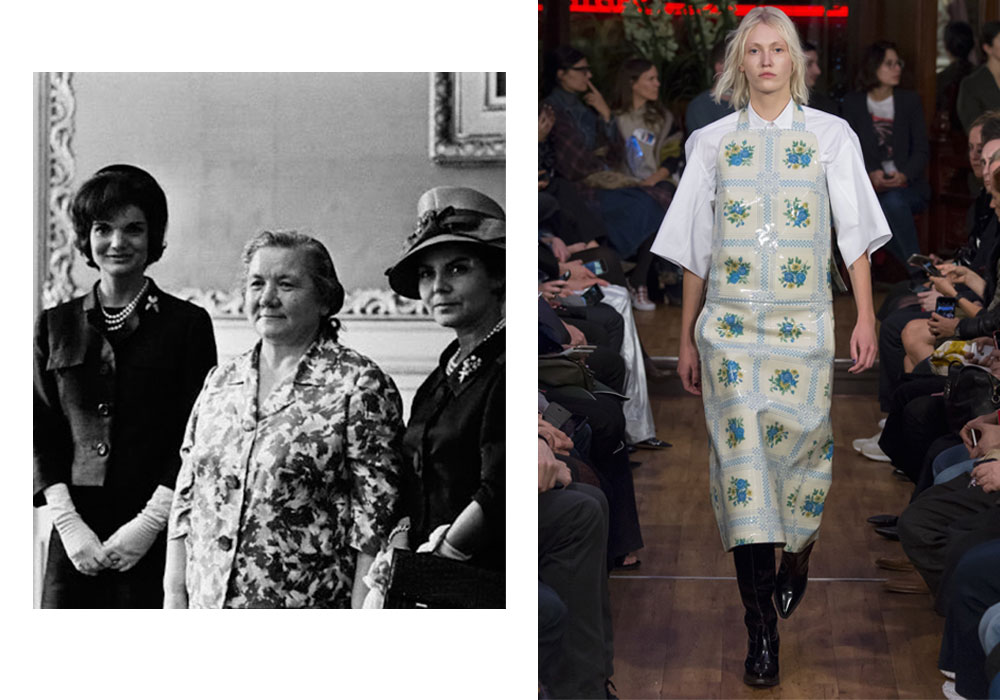
Vetements featured sturdy oil-cloth aprons printed with flowers as part of their SS 16 collection. Even given the setting, which was more like a night club, any post-Soviet kid who saw this would perhaps have felt a hint of nostalgia for these workwear-style yet strangely cutesy garments. Long floating dresses with abundant flower print, another runway trend, bears a strong resemblance to Soviet housecoats, a must-have token of domesticity. Nina Khrusheva’s photo from the White House visit in 1959 is the best example of this.
Chelnok check bag
The enormous checked bag has been doing the round in luxury fashion for decades, referenced by the likes of Marc Jacobs. Yet after appearing on the Balenciaga catwalk in all its glory, the trend is now hotter than ever. The checked bag has special significance in the post-Soviet world: in the 90s, the era of the emerging capitalism, they were used for smuggling and reselling goods from China and other countries. Delada even dedicated a whole collection to chelnoki, the post-Soviet smugglers, using the checked print all over different garments.
Flat caps
Huge leather coats
The imposing leather trench coat is now one a contemporary wardrobe staple, yet it also brings to mind the dark and murky period of Soviet history and the uniform of KGB officers. Generally, sturdy and thick leather and sheepskin coats and jackets were widespread in the Soviet times, as they could easily last a decade and were reliable protection against harsh weather.
Workwear as casualwear
Uniform design, with its practicality, comfort and durability, has been an inspiration for fashion designers for decades, including creative innovators like Junya Watanabe and Driev Van Noten. Today rough and resistant textiles are favoured by the hottest talents like Craig Green and Kiko Kostadinov, and Carharrt is the favourite of the fashion crowd. In the Soviet Union, workwear and uniform made up the majority of production at textile factories, and most Soviet people have first-hand experience of how these clothes can strip you of your identity — this power is still explored by fashion theorists and designers alike.
Square toe shoes
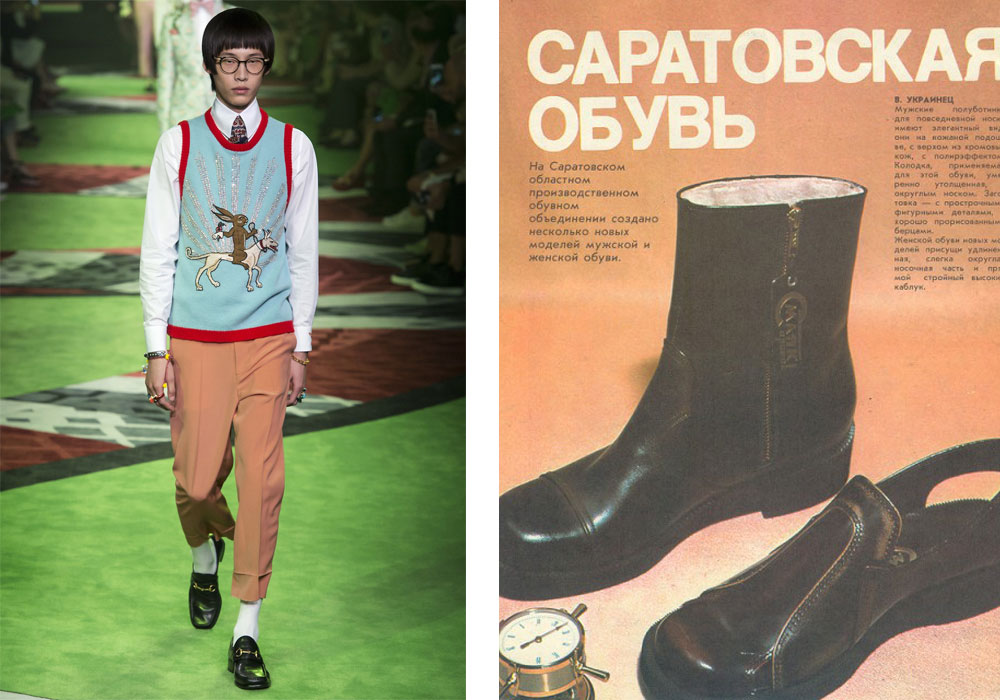
I’d dare to guess that shopping for footwear was not the best part of life in the USSR, particularly when it comes to men’s shoes. Trainers and sports shoes were not available until the production of Adidas started in the USSR in the late 70s, and even then they were incredibly difficult to get hold of. The Soviet shoe industry largely produced practical square-toed shoes. But guess what, they’ve been on the runway quite a lot lately.
